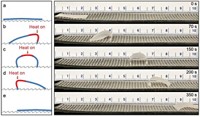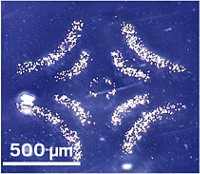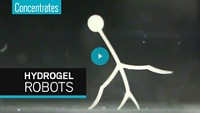Advertisement
Grab your lab coat. Let's get started
Welcome!
Welcome!
Create an account below to get 6 C&EN articles per month, receive newsletters and more - all free.
It seems this is your first time logging in online. Please enter the following information to continue.
As an ACS member you automatically get access to this site. All we need is few more details to create your reading experience.
Not you? Sign in with a different account.
Not you? Sign in with a different account.
ERROR 1
ERROR 1
ERROR 2
ERROR 2
ERROR 2
ERROR 2
ERROR 2
Password and Confirm password must match.
If you have an ACS member number, please enter it here so we can link this account to your membership. (optional)
ERROR 2
ACS values your privacy. By submitting your information, you are gaining access to C&EN and subscribing to our weekly newsletter. We use the information you provide to make your reading experience better, and we will never sell your data to third party members.
Materials
Soft Robot Walks
Harvard scientists create floppy, all-polymer crawler capable of navigating obstacles
by Lauren K. Wolf
December 5, 2011
| A version of this story appeared in
Volume 89, Issue 49
Not all robots must contain heavy metal skeletons and parts such as mechanical joints, according to a research team at Harvard University. Led by George M. Whitesides, the scientists have constructed an all-polymer robot that can crawl and undulate backward and forward, even navigating obstacles (Proc. Natl. Acad. Sci. USA, DOI: 10.1073/pnas.1116564108). Fabricated with soft-lithography techniques used to build microfluidic devices, the robot moves via a series of inflatable chambers embedded between layers of the stretchy commercial elastomer Ecoflex and the more rigid plastic polydimethylsiloxane (C&EN, Feb. 14, page 36). The researchers sequentially inflate the chambers in the arms and spine of the tetrapod robot to propel it along. Because of its flexibility, the 0.9-cm-thick robot is able to pass below a glass plate elevated only 2 cm from a surface. The soft crawler has a number of favorable qualities, including its simple, lightweight design, the researchers say. But other materials will be needed to improve its durability and load-bearing capacity. “Soft robotics,” they write, “may, thus, initially be a field more closely related to materials science and to chemistry than to mechanical engineering.”





Join the conversation
Contact the reporter
Submit a Letter to the Editor for publication
Engage with us on Twitter